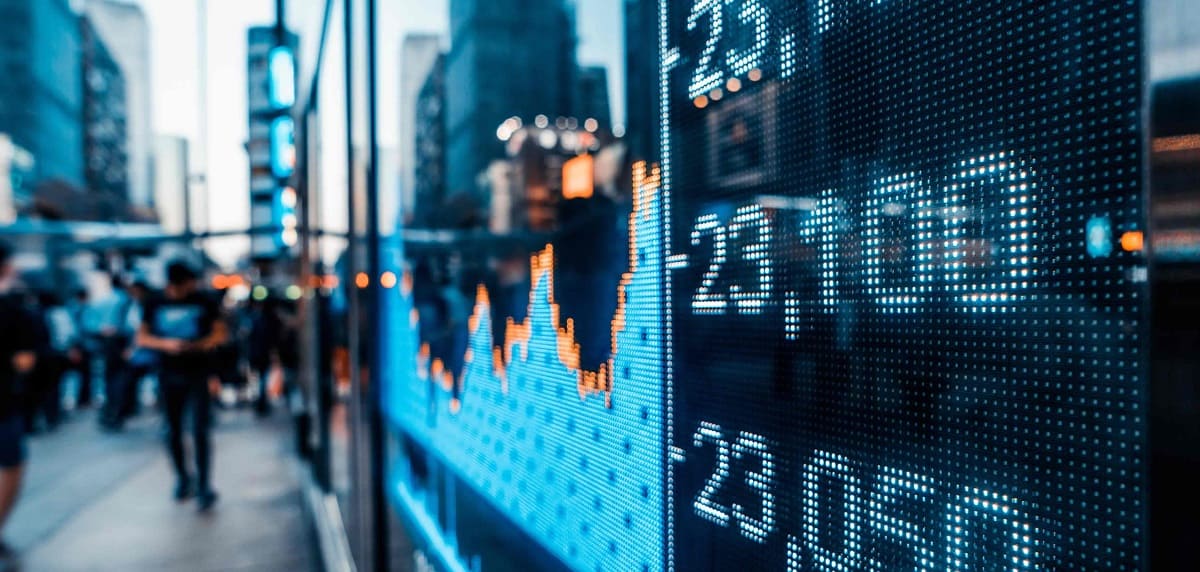In today’s dynamic financial landscape, investment opportunities are abundant, but few are as intriguing and potentially lucrative as futures trading. This article serves as your comprehensive guide to understanding futures trading, its significance in the world of finance, and how it can serve as a gateway to the vast and exciting commodity markets.
Understanding Futures Trading
Futures trading is a financial derivative market where participants buy and sell contracts for the delivery of specific assets at a predetermined price and date in the future. These assets can include commodities like oil, gold, agricultural products, financial instruments, and even stock market indices. Futures contracts allow traders to speculate on the future price movements of these assets without owning them physically.
The primary concept underlying futures trading is the agreement to buy or sell an asset at a future date, known as the expiration date, for an agreed-upon price, called the futures price. This provides investors with a unique opportunity to profit from both rising and falling markets, as they can take long (buy) or short (sell) positions.
It’s important to note that futures trading isn’t limited to individual investors; it’s a vital part of the global financial system used by businesses, institutions, and governments to manage risk and hedge against price fluctuations in various markets.
Whether you’re an individual investor looking to diversify your portfolio or a corporation safeguarding against market volatility, understanding the fundamentals of futures trading is crucial for successful participation in this dynamic market.
The History of Futures Markets
The history of futures markets is a fascinating journey that dates back centuries. Ancient civilizations, from the Babylonians to the Greeks, engaged in early forms of futures trading by entering into agreements for the future delivery of goods. However, the modern futures market, as we know it today, took shape in the 19th century, primarily in Chicago, USA.
Chicago became the epicenter of futures trading due to its strategic location as a hub for agricultural production and transportation. It was in Chicago that the first organized futures exchange, the Chicago Board of Trade (CBOT), was established in 1848. The CBOT laid the foundation for standardized futures contracts, bringing consistency and transparency to the market.
Over the years, futures markets expanded beyond agriculture to include financial instruments, currencies, and a wide range of commodities. Today, futures exchanges operate worldwide, allowing traders to access an array of markets and assets.
Understanding the historical evolution of futures markets provides valuable insights into the development of trading practices, regulations, and the global interconnectedness of financial markets.
Types of Futures Contracts
The versatility of futures markets is evident in the various types of contracts available for trading. Two primary categories exist: commodity futures and financial futures.
- Commodity Futures: Commodity futures contracts deal with physical goods such as oil, natural gas, metals, agricultural products, and more. These contracts are instrumental in allowing producers, consumers, and investors to hedge against price fluctuations in these tangible assets. For example, a farmer might use a corn futures contract to lock in a future selling price for their crop, thereby reducing the risk of price declines.
- Financial Futures: Financial futures encompass contracts related to financial instruments, indices, and interest rates. These contracts are essential tools for investors and institutions to manage risk and speculate on financial markets’ performance. For instance, a portfolio manager might use S&P 500 futures to hedge their stock investments against market downturns.
Understanding the distinctions between these two broad categories is vital for traders, as each type of contract has its unique characteristics, trading dynamics, and factors influencing price movements.
Participants in Futures Markets
Futures markets attract a diverse range of participants, each with distinct motivations and strategies. These participants can be broadly categorized into three groups: hedgers, speculators, and arbitrageurs.
- Hedgers: Hedgers are typically businesses, producers, or consumers who use futures contracts to protect themselves against adverse price movements. For instance, a coffee producer might use a futures contract to secure a selling price for their coffee beans, shielding themselves from potential price declines.
- Speculators: Speculators are individuals or entities who enter the futures market with the primary goal of making a profit from price fluctuations. They do not have a direct interest in the underlying asset but are interested in capitalizing on market volatility. Speculators play a crucial role in providing liquidity to the market.
- Arbitrageurs: Arbitrageurs are traders who seek to profit from price disparities between related markets. They simultaneously buy and sell related assets or contracts to capture price differentials. Arbitrageurs help maintain price efficiency in the futures market by aligning prices across various exchanges.
Understanding the motivations and roles of these market participants is essential for traders to navigate the complexities of futures markets effectively.
Now, with a more in-depth understanding of the foundational aspects of futures trading, we will delve further into the mechanics, advantages, and strategies associated with this dynamic financial realm.
How Futures Trading Works
To fully grasp futures trading, it’s essential to understand how it works step by step. Here’s a breakdown of the key components and processes involved:
Components of a Futures Contract
| Component | Description |
| Underlying Asset | The asset that the futures contract is based on. |
| Futures Price | The price at which the contract is agreed upon. |
| Expiration Date | The date when the contract expires. |
| Contract Size | The quantity of the underlying asset in the contract. |
Long and Short Positions
Traders can take two types of positions in futures trading:
- Long Position: A trader who expects the price of the underlying asset to rise will take a long position. They commit to buying the asset at the agreed-upon price on the contract’s expiration date.
- Short Position: A trader anticipating a price drop will take a short position. They commit to selling the asset at the futures price, even if the market price falls below that level.
Price Movements
Futures prices are subject to market forces, which can lead to daily price fluctuations. Each day, the contract’s value is adjusted based on the underlying asset’s market price. This process is known as “marking to market.”
Settlement
On the contract’s expiration date, traders must settle their positions. This can be done by physically delivering the underlying asset (for commodities) or through a cash settlement (for financial futures). Most futures traders close their positions before expiration, either by offsetting their contracts or rolling them over to a new contract.
Leverage and Margin in Futures
Leverage is a defining feature of futures trading and a key reason why it’s attractive to investors. Here’s how it works:
Leverage Explained
Leverage allows traders to control a more substantial contract value with a relatively small upfront investment. This is achieved by depositing a margin amount, which is only a fraction of the contract’s total value. While leverage magnifies profit potential, it also increases the risk of substantial losses.
Margin Requirements
Futures exchanges set margin requirements to ensure that traders have sufficient funds to cover potential losses. These requirements vary depending on the contract’s volatility and are usually a percentage of the contract’s total value. It’s essential for traders to maintain the required margin to avoid margin calls and potential liquidation of their positions.
Risk Management
Effective risk management is crucial when trading with leverage. Traders should establish risk tolerance levels, use stop-loss orders, and have a clear understanding of the potential losses associated with their positions.
Advantages of Futures Trading
Futures trading offers several advantages that make it an appealing choice for investors and hedgers alike:
▪ Liquidity
- Futures markets are highly liquid, meaning that assets can be easily bought or sold without significantly impacting prices. This liquidity ensures that traders can enter and exit positions with ease.
▪ Diversification
- Futures allow for diversification of investment portfolios. Traders can access a wide range of asset classes, including commodities, currencies, and indices, providing opportunities for risk management and return optimization.
▪ Profit Potential in All Markets
- One of the unique features of futures trading is its ability to profit in both rising (bull) and falling (bear) markets. Traders can take long (buy) positions to profit from price increases or short (sell) positions to profit from price declines.
▪ Efficient Price Discovery
- Futures markets are known for their role in price discovery. The continuous trading and transparency in futures prices contribute to fair market value determination, benefiting participants in related markets.
- With these advantages, futures trading offers a versatile and attractive option for investors seeking to expand their portfolios and manage risk effectively.
- Now that we’ve explored how futures trading works and the benefits it offers, let’s delve deeper into the risks associated with this dynamic market and strategies for success.
Risks Associated with Futures Trading
Despite its benefits, futures trading carries inherent risks. Price volatility, leverage, and market unpredictability can lead to substantial losses. It’s crucial for traders to understand these risks and have risk management strategies in place.
In conclusion, futures trading offers a gateway to the exciting world of commodity markets and financial derivatives. It provides opportunities for both seasoned and novice investors to diversify their portfolios and potentially achieve substantial returns. However, it’s essential to approach futures trading with a clear strategy, risk management in mind, and a commitment to continuous learning.
FAQs (Frequently Asked Questions)
- Is futures trading suitable for beginners?
- Futures trading can be complex, so beginners should start with proper education and consider paper trading before committing real capital.
- What are the most traded commodities in futures markets?
- Oil, gold, and agricultural products like wheat and corn are among the most actively traded commodities in futures markets.
- How can I manage risk in futures trading?
- Risk management techniques include setting stop-loss orders, diversifying your portfolio, and using appropriate position sizing.
- What is the difference between futures and options trading?
- Futures contracts obligate both parties to execute the trade, while options provide the option, but not the obligation, to buy or sell the underlying asset.
- Where can I learn more about futures trading strategies?
- Numerous books, online courses, and financial publications offer valuable insights into futures trading strategies.

